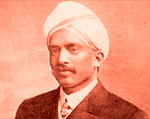INDIAN ARMED FORCES CHIEFS ON OUR RELENTLESS AND FOCUSED PUBLISHING EFFORTS

The insightful articles, inspiring narrations and analytical perspectives presented by the Editorial Team, establish an alluring connect with the reader. My compliments and best wishes to SP Guide Publications.

"Over the past 60 years, the growth of SP Guide Publications has mirrored the rising stature of Indian Navy. Its well-researched and informative magazines on Defence and Aerospace sector have served to shape an educated opinion of our military personnel, policy makers and the public alike. I wish SP's Publication team continued success, fair winds and following seas in all future endeavour!"

Since, its inception in 1964, SP Guide Publications has consistently demonstrated commitment to high-quality journalism in the aerospace and defence sectors, earning a well-deserved reputation as Asia's largest media house in this domain. I wish SP Guide Publications continued success in its pursuit of excellence.
- A leap in Indian aviation: Prime Minister Modi inaugurates Safran's Global MRO Hub in Hyderabad, Calls It a Milestone
- All about HAMMER Smart Precision Guided Weapon in India — “BEL-Safran Collaboration”
- India, Germany deepen defence ties as High Defence Committee charts ambitious plan
- True strategic autonomy will come only when our code is as indigenous as our hardware: Rajnath Singh
- EXCLUSIVE: Manish Kumar Jha speaks with Air Marshal Ashutosh Dixit, Chief of Integrated Defence Staff (CISC) at Headquarters, Integrated Defence Staff (IDS)
- Experts Speak: G20 Summit: A Sign of Global Fracture
S.V. Setty (1879 – 1918)

While testing an Avro D prototype, S.V. Setty crashed but escaped unhurt. To improve the machine, he came up with a new design. Avro allowed him to implement his design and asked Setty to fly it. He did, and landed safely. Famous Australian aviator John Duigan, who witnessed the flight, purchased the biplane on the spot.
Merely eight years After the Wright brothers’ historic first flight in 1903, the first Indian followed suit. In 1911-12, S.V. Setty designed and helped manufacture planes at Avro of UK. He also piloted them. However, a blaze that engulfed sections of Avro’s plant in Chadderton in October 1959 destroyed most of the early records of the company. Besides, it obliterated much of the evidence of Setty’s remarkable aviation achievements.
Sri Ram Venkata Subba Setty (conveniently contracted to S.V. Setty, and sometimes spelled Setti), was born on December 28, 1879 into a family of meagre resources. After his early education in Mysore, he graduated from Madras University. Later, at Thomson College of Engineering, Roorkee, he distinguished himself taking first place. He joined the Mysore State service in 1906 as Assistant Engineer. In 1909, he won a scholarship for an electrical engineering diploma from Faraday House, England, where he later gained practical experience through stints in engineering companies.
Setty was determined not to return to India without learning aeronautics. However, he was financially insecure since the Mysore government refused to extend his deputation (though he was granted leave without pay). There was also strong opposition from his family. Undeterred, he joined A.V. Roe and Company (Avro)—the only British company specialising in building aircraft—in May 1911 and plunged into aircraft designing. With financial support from a well-wisher, he also enrolled to learn flying at the Avro School.
The first reference to S.V. Setti in Flight, the official organ of the Aero Club of the UK that started publication in January 1909, is in the issue dated June 24, 1911 where he is referred to as a new pupil at Brooklands Aerodrome. Over the next eight months it makes around 10 references to Setty flying various exercises in the Avro biplane or the Green-engined Avro, usually solo, at times carrying out circuits, at times doing some rolling practice. The last reference in the issue of March 2, 1912 says he placed the Avro on its head. The report mentions that the pilot was unharmed, but this was probably Setty’s final flight. Notably, aviation at the time was dominated by accidents—minor and major—that did not necessarily reflect on the calibre of the pilot.
But Setty had joined Avro to be an aircraft designer. While testing an Avro D prototype, he crashed but managed to escape unhurt. Determined to improve the machine, he studied its flaws and soon came up with a new design. Avro allowed him to implement his design, which he did. They asked him to fly it—once again he obliged and landed safely. Famous Australian aviator John Duigan, who witnessed the flight, purchased the biplane on the spot. The aircraft that Setty built for Duigan is considered the prototype of Avro’s later E type. The D and E types were the models for the Avro 500. The Avro 500 was itself the inspiration for the Avro 504—the first and one of the most widely operated early trainer aircraft—that first flew in September 1913.
In a certificate dated March 12, 1912 Avro recommended Setty with the words: He has had considerable experience in the Flying School and has become very efficient in the tuning up of aeroplanes and engines. He has the makings of a very good pilot. He has also worked in the Drawing Office on some new types of machines, and we now consider him to have had sufficient experience to be left in entire charge of the erection of a machine of any type. Setty left England on June 30, 1912 with a gold medal from A.V. Roe for General Proficiency in Aeronautics. Inscribed on it was an Avro E.
In Bangalore, Setty began working towards his dream of building a plane in India. However, he was denied permission. A few years later, an influenza epidemic that killed about a fifth of the city’s population claimed his life, as also that of his wife and one of their four daughters. He breathed his last on October 12, 1918.





